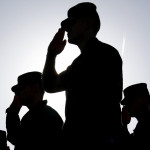The following is posted by Jordan Patrick, Pedro Zamora Public Policy Fellow.
June 8 is National Caribbean American HIV/AIDS Awareness Day. This is a time to reflect and show compassion for those living with HIV as well as a day of hope for Caribbean and Caribbean Americans alike.
HIV and the Caribbean community
Many U.S. cities have large communities of people born in the Caribbean. Miami, Florida, Atlanta, Georgia, Houston, Texas, and New York City, New York, are the cities with the largest Caribbean-born communities.
These communities have also been deeply impacted by HIV. For example, more than a quarter of people living with HIV in Miami were born in the Caribbean. In New York City, new HIV diagnoses were highest among African-born people, followed by those born in the Caribbean.
The most recent data we have about Caribbean Americans living with HIV in Atlanta and Houston is more than a decade old. More research is needed in these communities.
What does HIV stigma look like in the Caribbean: My personal experience of HIV stigma in Jamaica
Being born and raised in Jamaica, I have a firsthand experience of what HIV stigma looks like.
It manifests in different forms. It has been associated with homophobia, a person’s socioeconomic background, and it is also heavily assumed based on the physical appearance of an individual.
Growing up, I have heard a handful of Jamaicans spreading myths, such as “there is no need to worry or get tested for HIV once you are straight,” perpetuating that HIV is a strictly gay-related disease. Hints of classism also dictate that people from lower socioeconomic backgrounds are ridden with HIV, and that it is inevitable for them to contract the virus.
It is most certainly refreshing to see these stigmas and stereotypes be slowly wiped away by the youth in Jamaica over the past 5-10 years. Jamaican youth have been proactively working toward creating an inclusive environment for a wide cross-section of the population, primarily LGBTQ+ adolescent youth, benefiting those who are in need of not only HIV-related health care but also social acceptance.
I have been a part of this initiative and previously worked with the Jamaica Youth Advocacy Network. From my last few visits back home, I have seen preexposure prophylaxis, or PrEP, awareness, a significant increase in HIV education, as well as health care resources that provide free HIV-related care, such as testing and treatment. As a nation, Jamaica is most definitely contributing to reducing the negative stigmas around HIV in the Caribbean region.
I have been living in Miami for the past four years where I am an undergraduate student at the University of Miami. Miami is a melting pot for Caribbean natives and first generation born islanders. As a certified HIV outreach coordinator and tester in the state of Florida, I have the opportunity to interact with Haitians, Bahamians, Trinidadians and even fellow Jamaicans daily. I not only offer free HIV and sexually transmitted disease testing, but also provide extensive education about HIV, how it is transmitted, prevented and treated, as well as PrEP and PEP resources.
Compared to what I have heard in Jamaica, the myths and stereotypes behind HIV are relatively the same. A common complaint that I have heard from Caribbean American patients is that there is a lack of free HIV-related health care services in their ZIP codes compared to their white counterparts. This puts a barrier between them receiving care and knowing their status. Jamaica struggles with a similar issue with accessibility to HIV-related health care services. It is limited and expensive.
Caribbean Americans may be a hard-to-reach population, but it is not impossible. It is imperative that we do more to reach these communities. With Caribbean Americans facing a disproportionate burden of the HIV epidemic, there is still much work to be done.








Comments
Comments